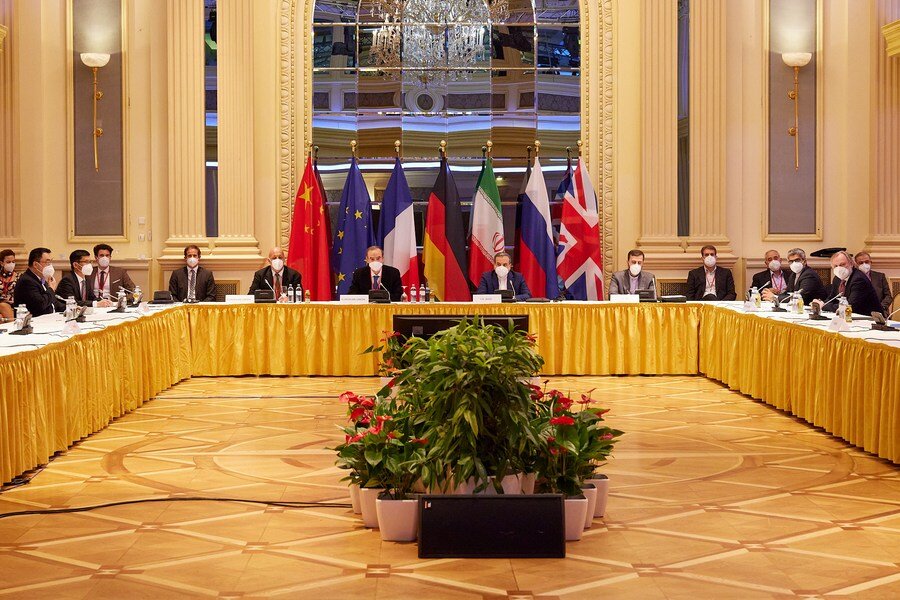The original 2015 nuclear deal and a revived one; 10 things to know
Efficiency of the original and revived nuclear deal

The 2015 nuclear deal that was kept on file in some capitals is taken to the negotiation table. It aspires to find a solution for full operation. It was put on life support by a mad decision by Donald Trump, the former president of the U.S., in May 2018. And now, some sort of strong willingness has emerged among all parties to revive the multilateral deal.
In this vein, President Biden and President Rouhani share a common goal: They are ready to re-enter the nuclear deal as a limitation on Iran's production of nuclear fuel would be swapped with a lifting of sanctions.
Nevertheless, if the ongoing talks in Vienna reach a favorable outcome, no one can claim that the 2021 deal will be like the original one (2015 one) or it can materialize what the 2015 deal was intended to, although the text and content of both deals are the same and will remain intact. In other words, the original deal had efficacies that should be distinguished from the situation or context of a revived deal in 2021. Discrepancies between the operative context of the original and a revived one, that would subsequently have their implications, should be enumerated as follows:
1- Taboo: The initial deal broke the taboo of direct talks between Iran and the U.S. Mistrust is perpetual between both sides because the U.S. was not a compliant party to its commitment.
2- Attraction: The 2015 nuclear deal was very attractive for Iranian citizens and international media; all were following developments every moment. Every quotation of negotiators was instantly forwarded or retweeted but the current talks in Vienna are not as attractive as the 2015 ones, neither for Iranians nor for foreign media outlets.
3- Modification of situation: While the original deal was supposed to improve Iran’s economic, regional and international relations, a revitalized deal in 2021 at first might be able to alleviate the implications of serious economic problems in Iran caused by Trump’s reckless withdrawal from the deal.
4- Transformation of public opinion: The positive changes recorded by the 2015 deal in the Iranian public opinion marked a turning point toward relations with the West. However, the U.S. withdrawal from the deal solidified and awaken four-decades of distrust.
5- Iran’s presidential election: The 2015 nuclear deal made the 2017 presidential election in Iran a sailing victory for President Rouhani, but a resurrected deal should not be accounted as a game-changer. It can’t guarantee the victory of one party in the presidential election. In other words, in 2015 the implications of foreign policy changed internal policy in Iran but now it is vice versa; the June presidential election results can guarantee the enforcement of a revived deal.
6- Investors’ perspective: The original deal portrayed Iran as a new attractive market; investors could rely on Iran as a riverbed for production and marketing, but now they assess Iran as a market that needs only short-term plans, not strategic planning.
7- Dualism of attracting investment and trade: ln 2015, foreign companies were eagerly willing to flood into Iran to seal contracts, but right now investors believe capital requires perpetual, not transitional, security. A 2021 deal at best can boost Iran's foreign trade.
8- Regional countries’ concern: Worries among some regional countries over the original deal had no legal justification; but as President Biden's administration cannot afford to stay in the Middle East for a long period, a new variable is added to complicated power politics in the region. It runs the risk of uncontrolled measure by particular players, so regional countries should build on their capabilities. Nonetheless, the deal - the original or revived one- will prevents a power gap that others might try to fill.
9- The sense of success: For the West, including the U.S. and European countries, whether the 2015 or the 2021 nuclear deal would be a great success because it reassures them that Iran's nuclear program is peaceful. A revived deal is unlikely to meet expectations, because the degree of economic damages caused by the original deal is incalculable. A resurrected deal at best can fulfill a minimum of the economic demands of Iran.
10- The slow pace of the talks: While the Americans see a restoration of the 2015 nuclear deal as a first step to extend it to other issues, the Iranian side has been repeatedly insisting that negotiation is only limited to the original agreement.
